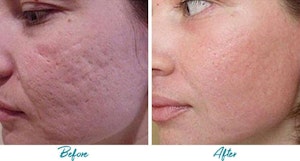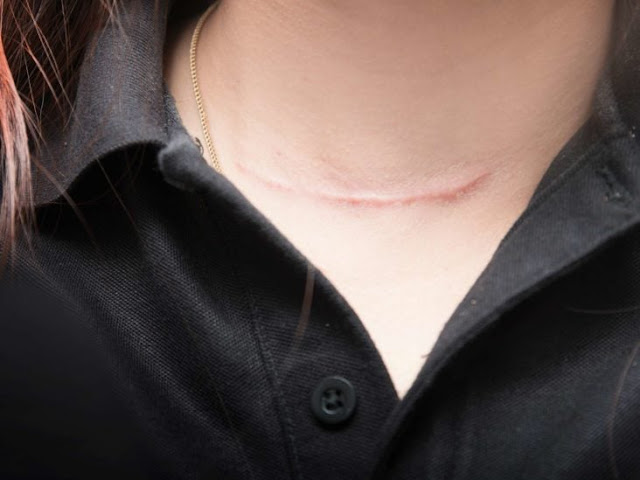When a person has an injury, the body responds by repairing the damaged towel, which creates scar towel.
Scar towel is a collection of cells and collagen that covers the point of the injury. People can develop scar towel on their skin as the result of an injury, surgery, or acne. Other areas of the body can also develop scar towel, similar as the heart muscle after a heart attack.Scar towel can present in a variety of ways, including:
- A Keloid is a raised, red- skin colored shrine of scar towel that can form on apkins after an injury. Keloids frequently appear on the upper casket, shoulders, and upper back.
- A Hypertrophic scar is a more common form of scar towel. People with hypertrophic scars may notice that they fade over time.
- A Contracture scar generally occurs in apkins that have had a burn injury. These scars can vitiate the movement of the affected area.
For more information and booking appointments, checkout Laser Scar Removal in Dubai.
Causes and Prevention
Although croakers remain doubtful of what causes scar towel to form, they do know that hypertrophic scars and keloids can affect from becks , nonentity mouthfuls, acne, funk spell, piercings, tattoos, and surgery.
Experimenters have also set up that keloids develop more frequently in people with darker skin.
Both keloids and hypertrophic scars tend to do more constantly in youngish people between 10 and 30 times old.
The most important guideline for scarring is forestallment. People who have threat factorsTrusted Source for developing abnormal scars should avoid optional surgery when possible and treat conditions that can affect in scarring, similar as acne. Occasionally, surgery is necessary.
People may witness itchiness and pain at the position of the scar. Other scars can circumscribe movements. Some people may witness emotional and cerebral torture from the appearance of scars.
Croakers can define treatments to reduce the appearance of scarring, but they must also address the cerebral impact and physical restrictions a scar can beget.
Treatment
Experimenters estimate that scar treatments in the United States bring over$ 20 billion every time.
There's a variety of treatments available for scars, but they may not each be successful for everyone. It's important that croakers explain the limited effectiveness of these treatments and set reasonable prospects for people managing their scars.
Treatment options include:
- Topical
- Inject-able
- Cryotherapy
- Radiotherapy
- Laser Treatment
- Mechanical
Onion excerpt
Occasionally a croaker may recommend applying onion excerpt topically to help a scar from forming after surgery or ray tattoo junking.Onion excerpt may haveanti-inflammatory parcels and the capability to kill bacteria.
People generally tolerate onion excerpt well, but experimenters haven't set up harmonious substantiation that this treatment is effective. One studyTrusted Source set up that it was no better than a petroleum- grounded ointment, similar as Vaseline.
Mitomycin C
Mitomycin C is a type of chemotherapy agent that has limited effectiveness for treating keloids. utmost studies have delved the efficacity of topical mitomycin C when used alongside other treatments, similar as radiation remedy and surgical junking of the keloid. Experimenters don't suggest mitomycin C for scar operation because there isn't enough dependable substantiation to support its use.Imiquimod
Imiquimod is available in a 5 cream expression. Some croakers define imiquimod cream to people with keloids after surgical junking. formerly again, this topical treatment has not shown harmonious results in clinical trials for treating and precluding keloid scar conformation.Bleomycin
Some croakers might fit bleomycin into the scar to stop the product of collagen at the point of the injury. Only a many studiesTrusted Source have tested the effect of injectable bleomycin on perfecting the appearance of hypertrophic scars and keloids.Some experimenters have set up that bleomycin may also reduce greenishness, itchiness, and pain associated with these scars.Bleomycin is a treatment that croakers use in cancer treatments. It's a poisonous substance, but croakers infrequently report poisonous side goods from edging in it into a scar.
Interferon
Interferon also affects the product of collagen, and croakers can fit it into injured towel. Experimenters have set up in clinical studiesTrusted Source that edging in interferon dropped the size of a keloid by 50 in 9 days. This produces a more significant effect than edging in a corticosteroid.Another study showed that after edging in interferon into a hypertrophic scar, the quality and volume of the scar bettered.
Croakers don't generally use interferon because it's precious, and current substantiation isn't strong enough to support its use. It also requires three injections per week, which may be inconvenient for some people.
Corticosteroids
Croakers prefer corticosteroid injections as the first choiceTrusted Source for treating keloids and alternate choice of treatment for hypertrophic scars. Croakers use triamcinolone acetonide, which is an injectable corticosteroid.The recommended dosing schedule may vary, but a typical injection schedule involves three to four injections every 3 to 4 weeksTrusted Source. Some people may bear further than four injections. Experimenters have demonstrated that between 50 and 100 of people responded to the treatment.
Some croakers will administer triamcinolone acetonide injections on with cryotherapy to ameliorate a scar’s consistence and drop itchiness.
Botulinum poison A
Some croakers have been edging in botulinum poison A to help and treat scars for several times, but experimenters have set up inconsistent evidence for its effectiveness in scar operation.Cryotherapy
Cryotherapy involves using liquid nitrogen to cool body towel to below zero temperaturesTrusted Source. This seems to have an effect on scar operation. This treatment may have a benefit in perfecting the appearance of scars by affecting the underpinning scar towel.Some studies have reported a reduction of 51Trusted Source of the volume of a scar following one treatment, but some experts suppose cryotherapy is more effective when used in combination with other treatments, similar as injectable corticosteroids.
Radiotherapy
Croakers may use radiotherapy along with other scar treatments. generally, people will admit radiotherapy after having a keloid removed to reduce the conformation of another keloid.Radiation can help to reduce cell growth and help collagen from depositing in the injured towel.
Croakers advise the use of radiotherapy on scars located on the neck or casket because there's an increased risk that a person may develop thyroid or bone cancer as a result of the radiation.
Laser Treatment
Silicone treatments
Croakers occasionally recommend silicone treatments for scar operation. After using silicon-grounded treatments, people may notice an enhancement in the volume, pliantness, color, and firmness of hypertrophic scars and keloids.Different silicone treatments are available, similar as silicon gel distance and creams that people can apply to the scar for 12 hours a dayTrusted Source. People may need to use the treatments for 12 to 24 weeks before seeing any results.
Pressure remedy
People can apply dressings onto the scar towel that apply pressure. Mechanical pressure can also reduce blood force to the scar towel, which will help to flatten the scar. These dressings are uncomfortable, and people need to wear them for at least 23 hours a day for 6 months.Unfortunately, experimenters have shown that pressure remedy may offer only slight advancements in scar height.







0 Comments